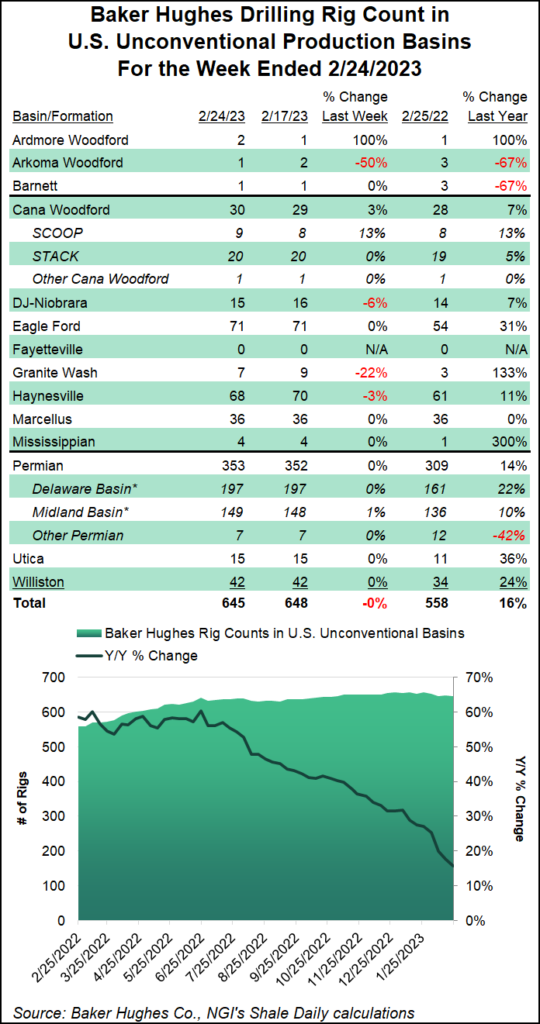Oil Drilling Declines Send U.S. Count Tumbling in Latest BKR Data
A slowdown in oil-driven drilling caused the number of US rigs to fall by seven units to 753 for the week ended Friday (February 24), according to updated figures from oilfield services provider Baker Hughes Co. (BKR).

The total number of natural gas-focused rigs in the US remained flat at 151 week-over-week, with oil-focused rigs accounting for the entire domestic decline. Land drilling fell seven units week-on-week, while the Gulf of Mexico number remained flat at 17. The total number of horizontal rigs decreased by seven, along with a decrease of two vertical units. This was partially offset by an increase in directional drilling by two rigs.
The combined 753 active U.S. rigs on Friday compares to 650 rigs operating in the same period last year, according to BKR figures, based in part on data from Enverus.
Canadian rig count fell four units for the week to end at 244 from 224 in the same period last year. Changes there included a five rig decline in oil rigs, partially offset by a one rig increase in natural gas-driven drilling.
BKR tracked changes in key drill regions and saw two drill rig declines in the Haynesville Shale and Granite Wash over the period. Ardmore Woodford, Cana Woodford and Permian Basin each added one rig to their respective totals, while Arkoma Woodford and Denver Julesburg-Niobrara each recorded decreases by one rig, BKR data shows.
Counting by state, West Virginia shed three rigs each week, while California, New Mexico and Oklahoma shed two rigs each. Colorado recorded a net decrease of one rig during this period.
On the other side of the ledger, Pennsylvania added three rigs week-over-week to bring its total to 25, matching BKR’s numbers.
Updated federal data recently showed that US exploration and production (E&P) companies continue to pump oil at a robust pace, keeping production at pandemic-era highs.
E&Ps produced 12.3 million barrels per day for the week ended February 17, even with the previous week and peak in 2023, data from the US Energy Information Administration’s (EIA) latest Weekly Petroleum Status Report showed. It also kept crude oil production at its highest level since March 2020, when widespread coronavirus outbreaks hit the United States.
EIA’s latest result, released on Thursday, significantly surpassed last year’s level of 11.6 million b/d.